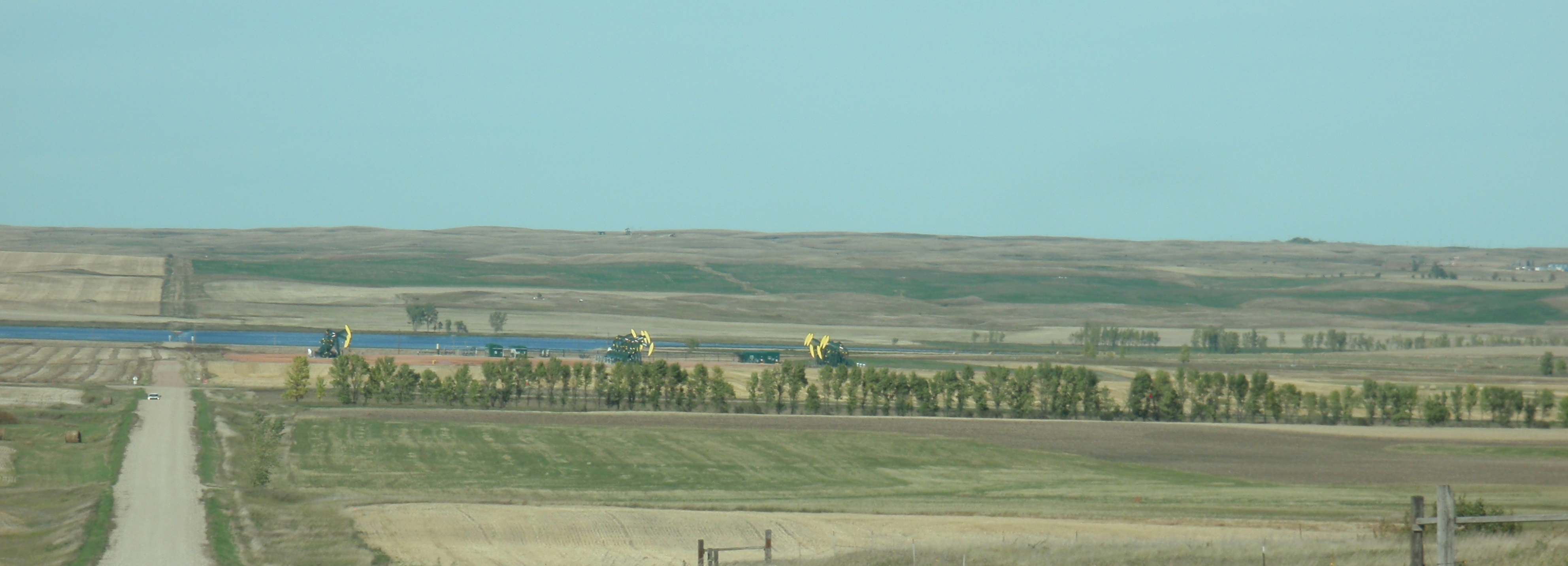
One of many ways energy wizards are driving down the cost of drilling for oil is putting multiple wells on one site.
7/4 – Amy Dalrymple at Dickinson Press – Bakken multi-well pads getting bigger – The technique of drilling several wells from one site, called multi-pad multi-well pad drilling, is increasing. Both the number of pads and the number of wells per pad is going up.
For several years now I have noticed multiple pump jacks on one site.
In September 2015, I saw a 15 well pad. It is a few miles west of Ross and about a mile and a half north of highway 2. You can see it on Google maps at coordinates 48.333785, -102.653962, although the satellite photo is really old. It shows only the middle six wells with pumps installed and a drilling rig working on the west row of wells. No progress on the east row of wells.
Photo above is of the site. Here are a few more photos:
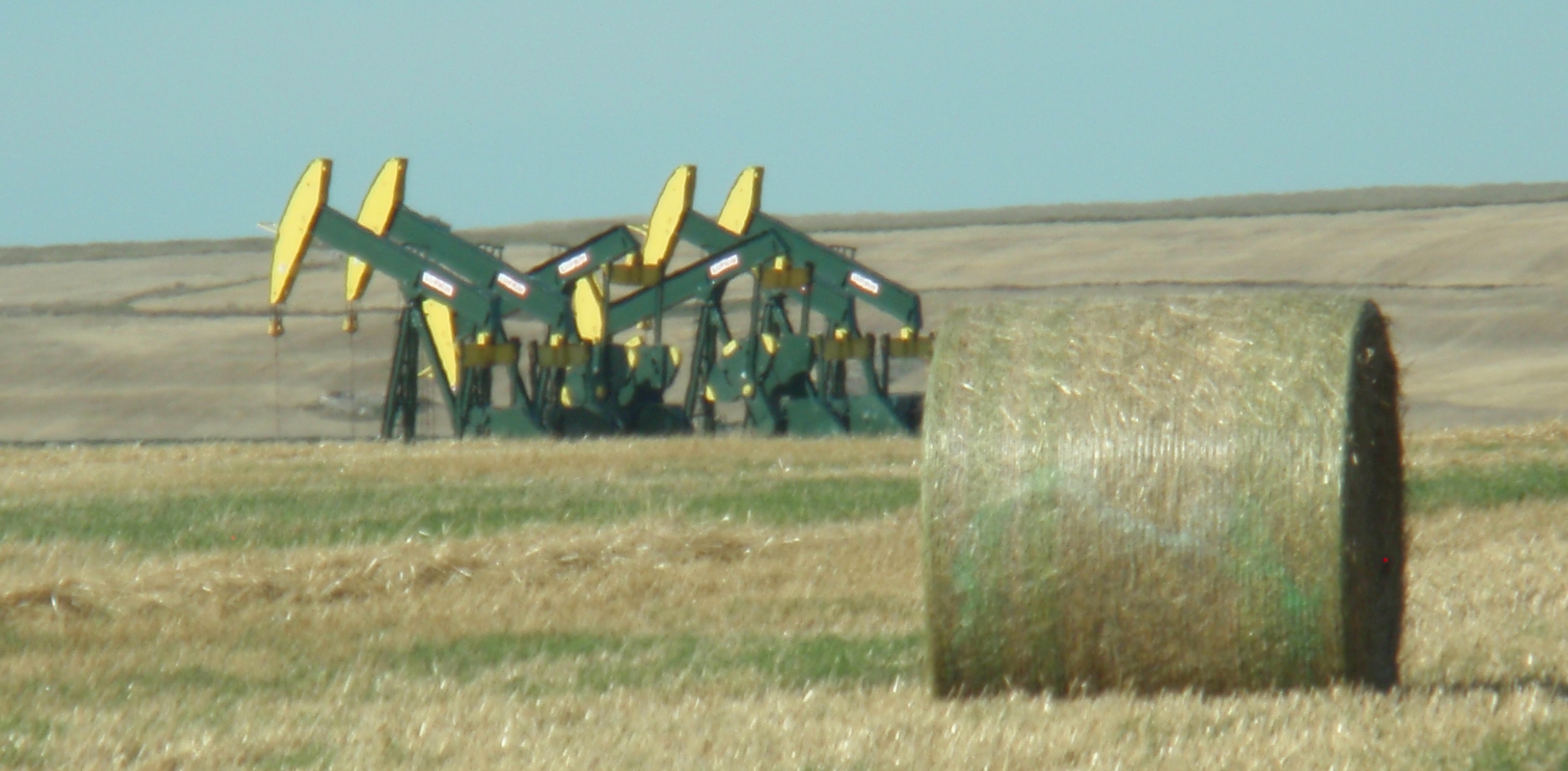
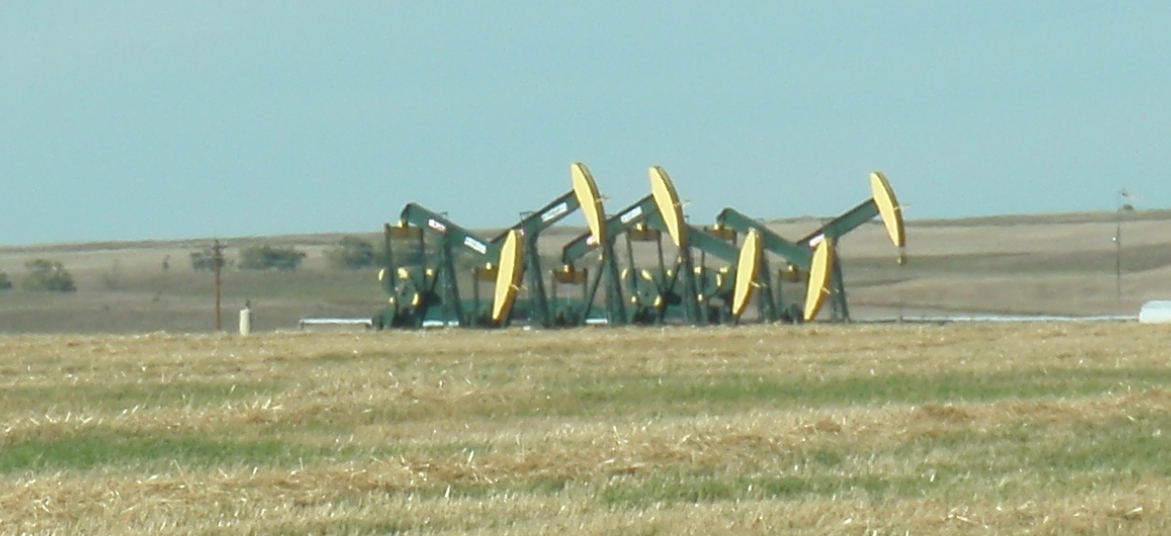
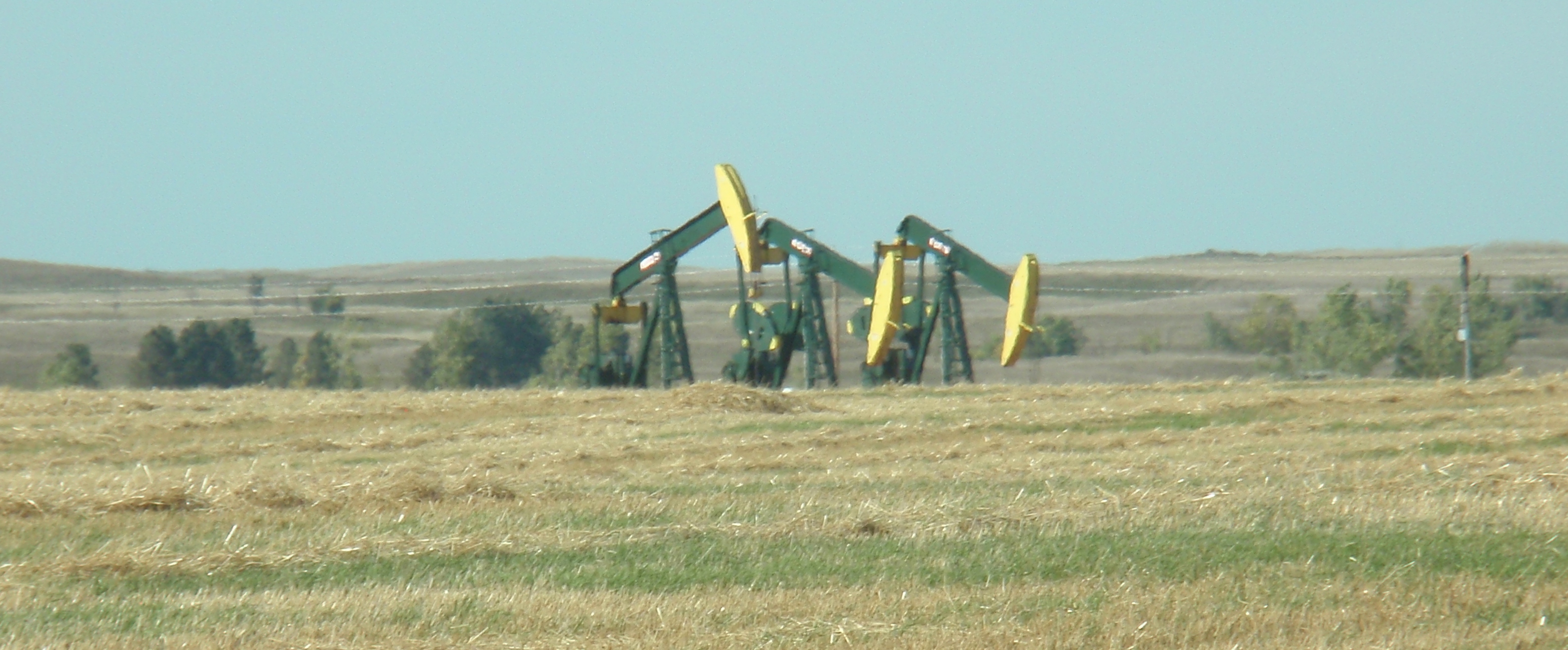
Look around on Google maps a half mile north from that site and you will see a railroad trans-loading facility. Look to the east for a mile from there and you can pick out two medium-sized multi-pad multi-well sites and one site that is just being developed that is as large as the one with 15 wells. I’ll guess there will be 15 or 20 wells on that site eventually.
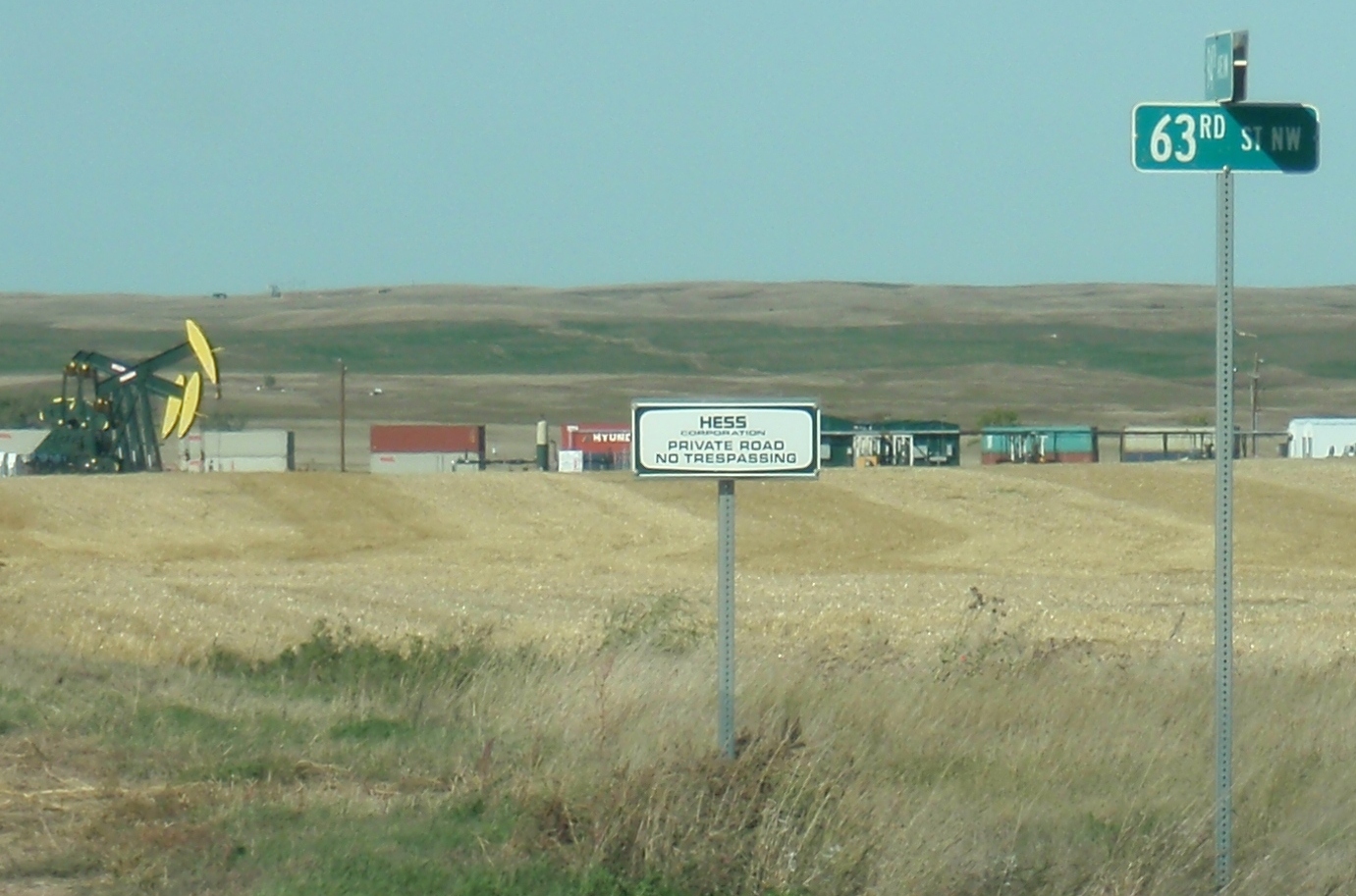
Just one part of the efficiency is land usage. Article says a single well averages 3.35 acres of land. A large multi-pad multi-well operation reduces the land per well to an average of 1 acre or less, according to Lynn Helms.
Consider how much easier and cheaper it is with 12 or 15 or 18 wells in one place to put in pipelines to gather the natural gas and get the oil to a terminal.
Article says Hess has an 18 well pad in Mountrail County. A line of nine wells each reach out 2 miles in one direction and nine wells go 2 miles in the opposite direction. That is 1,280 acres covered in each direction, or 2,560 acres worked from one site.
There is another big multi-pad site at the southwest corner of Williston. The satellite photo at Google maps shows 14 wells. Using my negligible understanding of such things, it seems to me like there is room for another 6 or 7 wells eventually.
You can see this site at 48.109623, -103.729930. I haven’t had the opportunity to drive by that site. When I do, I’ll post some pictures. Ought to be a cool site.
Mr. Helms says in the article that the best spots in McKenzie, Dunn, and Mountrail counties will eventually need 32 wells in each two square mile area (called a 1,280 acre spacing unit) to fully develop Bakken.

Update: Followup post here has links to superb aerial photo of the above site and a delightful photo of the 18 well site. Bruce Oksol at The Million Dollar Way has several posts on the above site.
Outstanding post. Thank you.
Wow. Coming from you, that is quite a nice compliment. Thanks.
This blogging thing is a lot of fun.
Jim